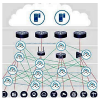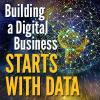Strategic advice to leverage new technologies
Technology is at the heart of nearly every enterprise, enabling new business models and strategies, and serving as the catalyst to industry convergence. Leveraging the right technology can improve business outcomes, providing intelligence and insights that help you make more informed and accurate decisions. From finding patterns in data through data science, to curating relevant insights with data analytics, to the predictive abilities and innumerable applications of AI, to solving challenging business problems with ML, NLP, and knowledge graphs, technology has brought decision-making to a more intelligent level. Keep pace with the technology trends, opportunities, applications, and real-world use cases that will move your organization closer to its transformation and business goals.
Recently Published
Big data, the IoT, and the cloud are technological innovations that need to demonstrate corresponding business value. While the aforementioned technologies have distinct identities of their own, they are also interdependent. Innovating with these technologies at a business level demands a multidisciplinary, holistic approach that also incorporates an understanding of how to manage risks. In this Advisor, we discuss challenges that arise in real-life scenarios due to lack of interoperability and some practical standards in the IoT and cloud space.
Cybersecurity Reporting: What Does the Board Want?
Given the heightened cybersecurity environment, what should you provide in response to a board request for assurance that the company is performing its fiduciary duty? What information should you provide to assure the board that it is appropriately protecting the company? This Executive Update proposes a five-section standard presentation template for the board.
With the deployment of next-generation mobile networks, IoT and edge, and fog and cloud computing, the tech world is undergoing the largest-ever overhaul of its information service infrastructure. In this connected-everything/data-everywhere model, the benefits are numerous, but so are the challenges to system security. The OpenFog Reference Architecture for fog computing has emerged as a highly credible paradigm for architecting compute-intensive solutions for networks and applications that utilize IoT, 5G technologies, and AI. This Advisor describes three distinct aspects of an approach to node-centric security in an open, interoperable fog computing environment that are critical to understanding how fog bridges gaps in the continuum between the cloud and things.
Pat O’Sullivan starts from the premise that the principles of standardization and conformity that were developed for the data warehouse are equally applicable to a digital business to deliver a consistent view of information to many lines of business. He explores the characteristics of a system of common metadata that can define the links between an existing data warehouse and an emerging digital business, describing the components and characteristics of this new metadata layer and how it is essential to fueling the growth of the AI capabilities of a digital business.
It’s All About That Data
Michael Müller believes that managing change is essential for a digital business initiative. This position emerges from his experience with BI projects where “Babylonian confusion” reigns, as business and IT lack a common vocabulary and an ability to communicate clearly about data needs and structures. Müller posits that digital business shares these same characteristics, but at a much larger scale because of the nature of big data.
Martijn ten Napel explores the challenge that has confronted him throughout his career: why do so many BI projects fail? His conclusion is that the struggle to achieve coherence between people, process, information, and technology has caused the complexity of the data landscape to grow out of control. His answer to the problem is the connected architecture — a framework and thought process for the organization of DW and BI projects. He believes it applies equally to digital business.
Adapting to the changing business environment of a digital business is about much more than implementing new technologies like analytics, the IoT, and so on. Rather, business managers from the boardroom down must drive the adoption and skilled use of data-based decision making. Ultimately, middle managers are critical to digital business — making data-based decisions and selecting tasks that provide the necessary capabilities to deliver on a digital transformation vision and strategy.
Starting from a data warehouse just makes sense. Of course, the architectural thinking and technology offer valuable intellectual capital to IT. But the real value comes from the decades of experience in information/data governance and management, as well as the interpersonal and organizational skills that DW implementers have gathered. As you will see from the articles in this issue, the contributors are on the same path.


















